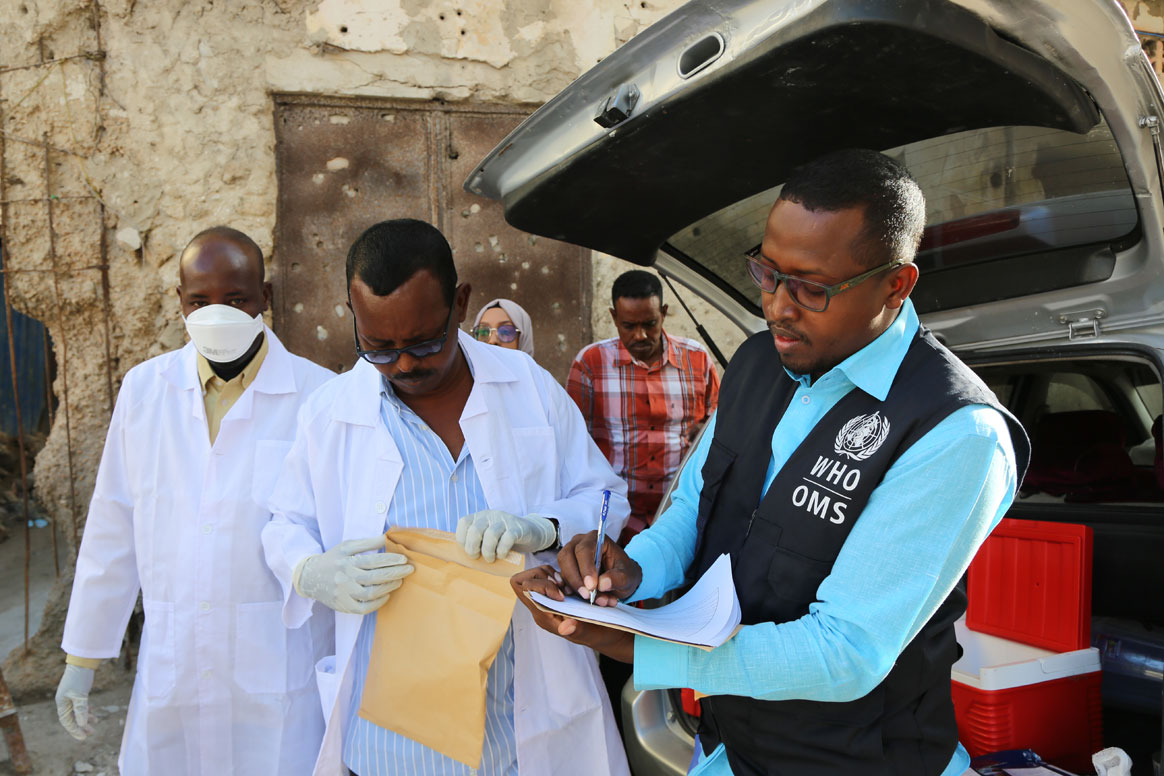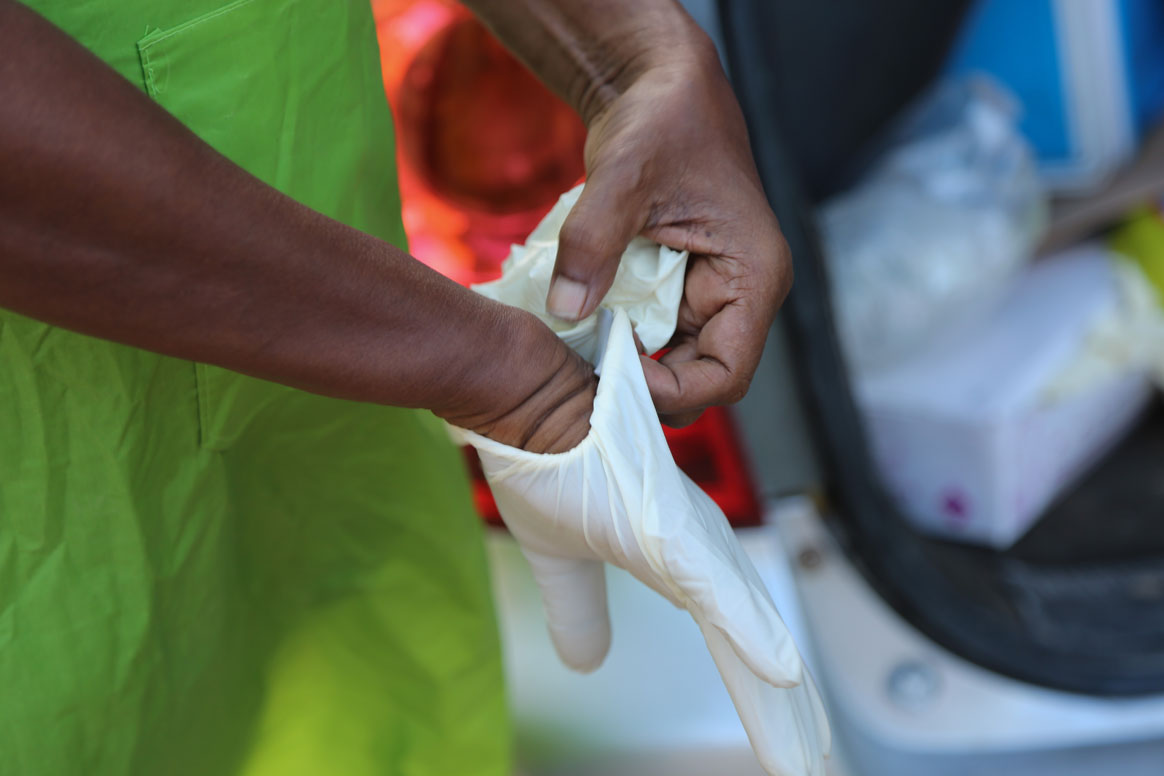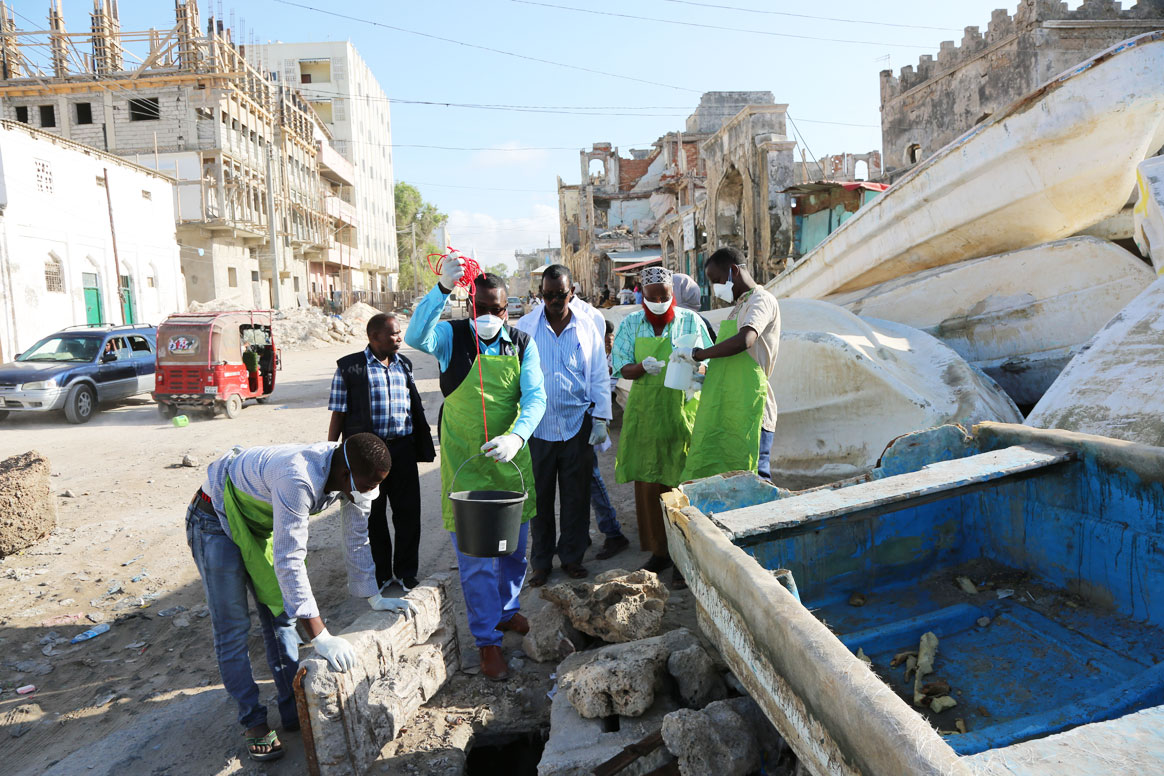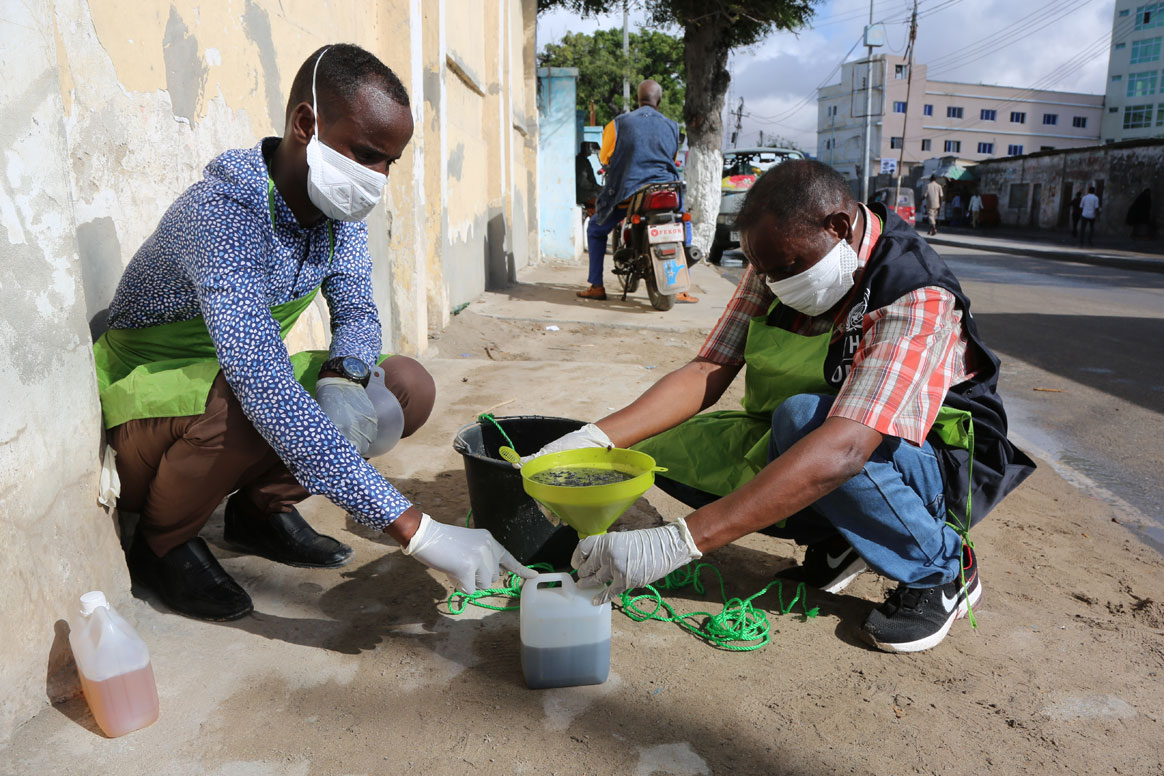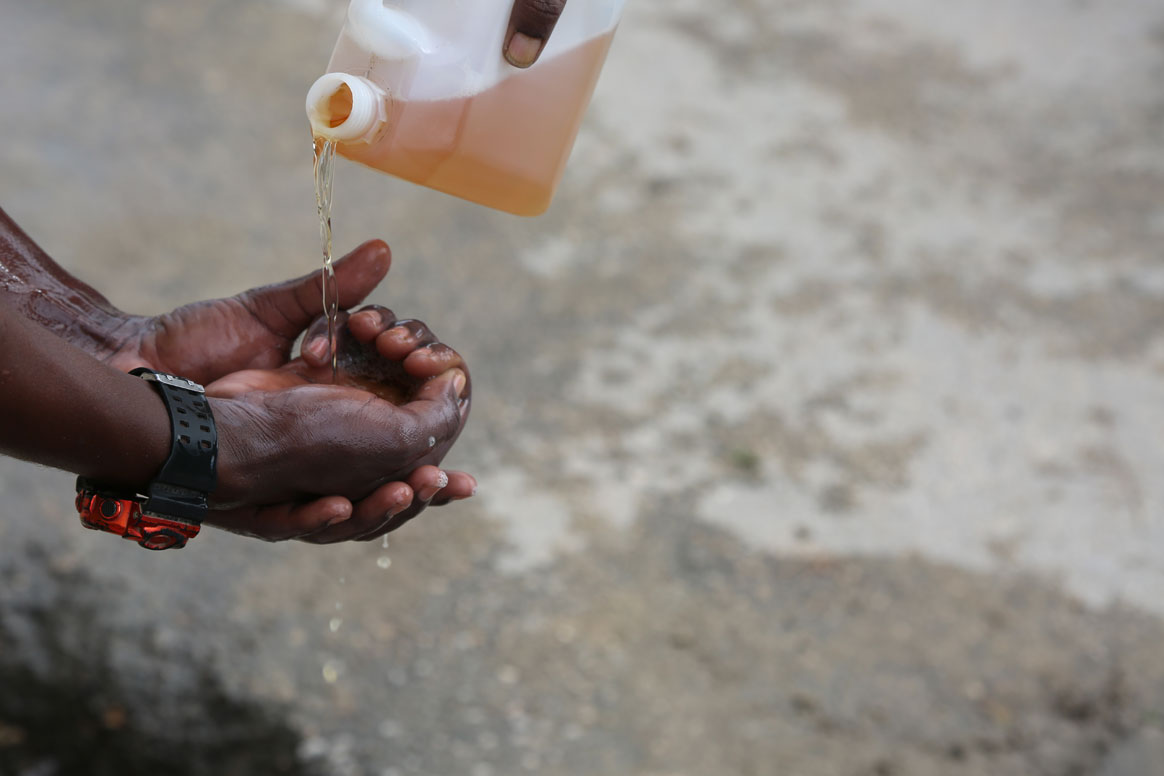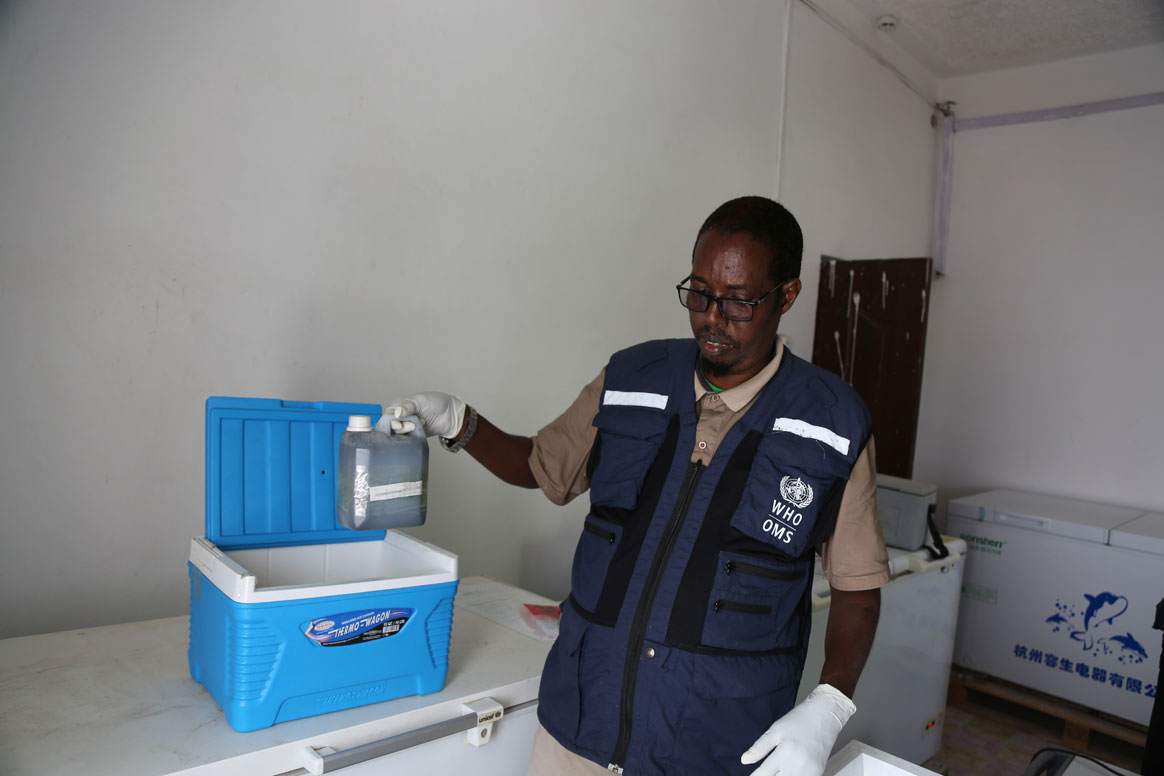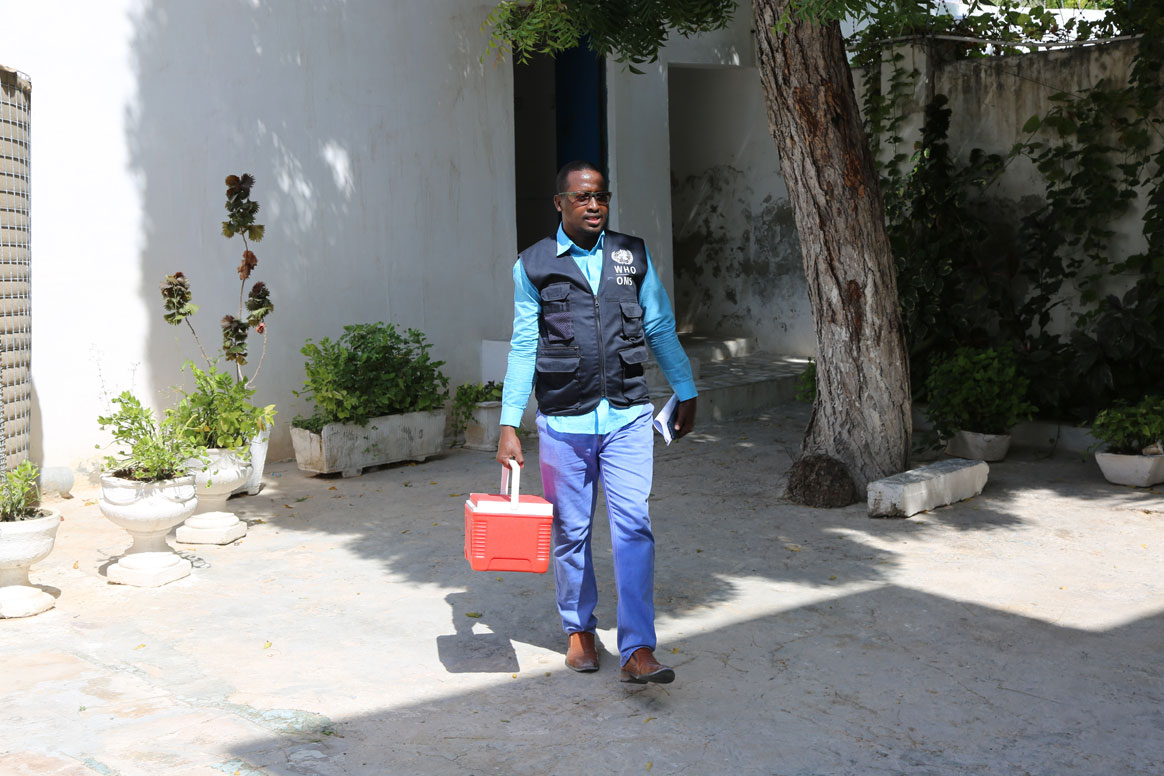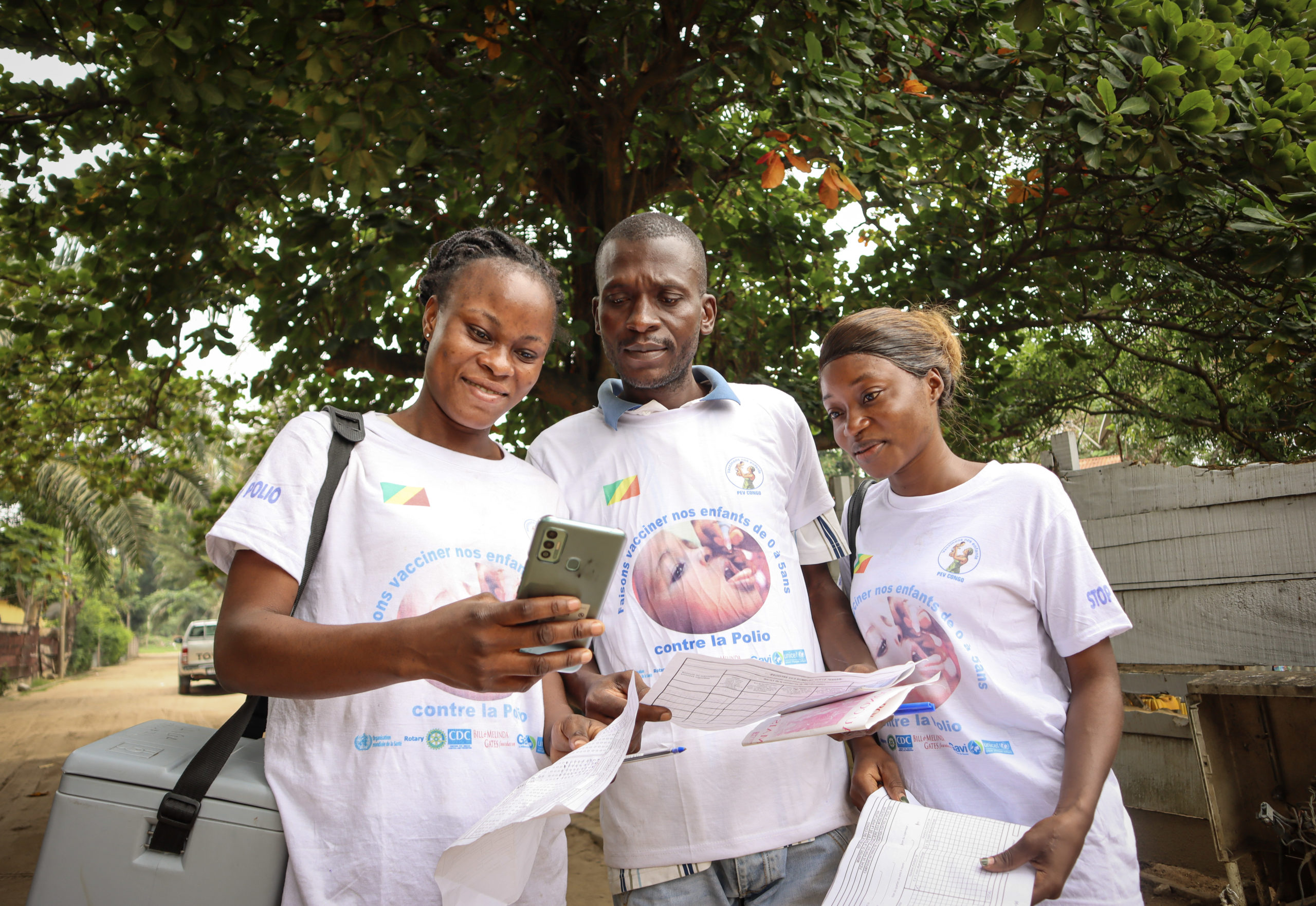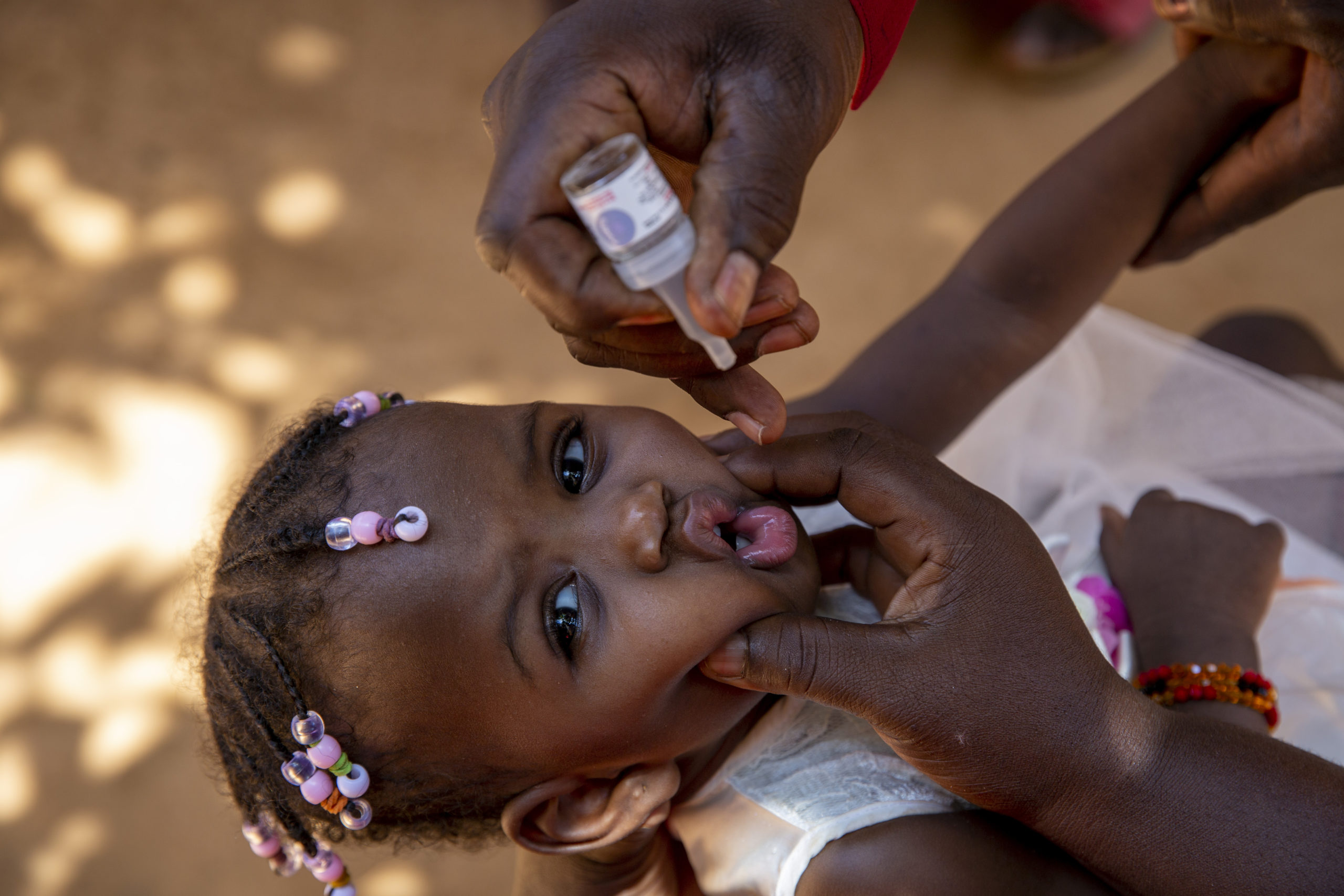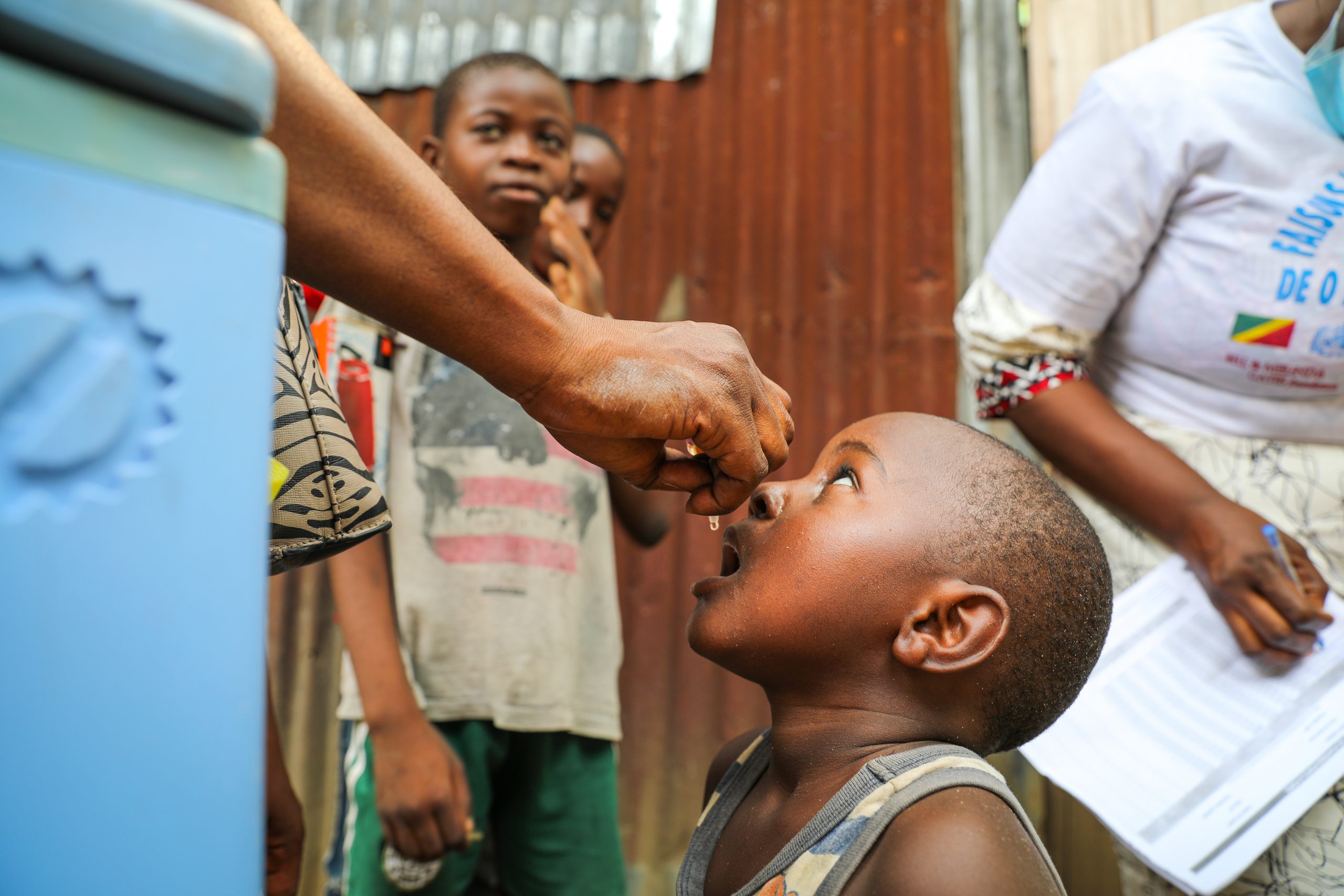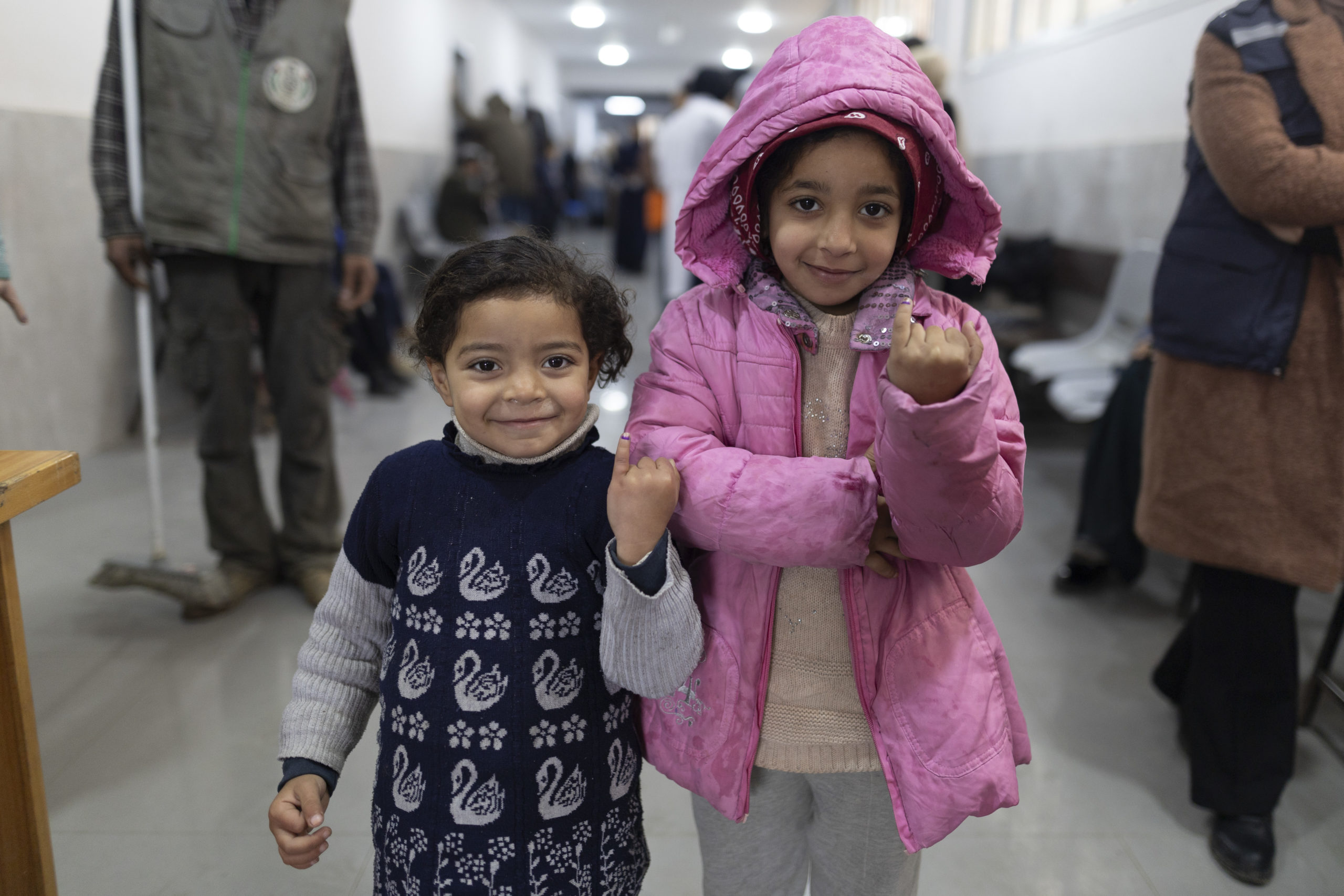Environmental surveillance teams in Mogadishu access the underground closed drainage system to collect sewage waste water samples, which they package and send to the laboratory for testing. If poliovirus is identified in a sample, epidemiologists know that the disease is likely to be circulating amongst the community whose sewage drains into that part of the system. This process is called environmental surveillance and is one of the most important tools for the polio programme to help detect poliovirus.
Vaccinating every child and conducting disease surveillance to know where the poliovirus is circulating are key strategies to end the outbreak. Low immunization coverage has led to an outbreak of vaccine-derived poliovirus in Somalia. This can occur in places where not enough children have received their full vaccine doses.
The teams must follow best practice to collect samples, to ensure that any poliovirus present can be detected.
Click through this photo gallery to learn more about the sample collection process.
Urobo siteMohamed Sharif Mohamed, Regional Polio Eradication Officer for Banadir, is responsible for organizing the collection of waste water samples at two sites in Mogadishu.
He explains, “Environmental surveillance was established in September 2017, when the outbreak of vaccine-derived poliovirus occurred.”
So far in 2019, 36 samples have been collected from four sites in the city as part of this important initiative.
Waberi District siteFirst, Mohamed Sharif’s team put on face masks, aprons, and gloves. They are collecting untreated sewage waste water, so it’s crucial that they wear protective clothing to protect themselves from bacteria and viruses that they may encounter during their work.
Their next task is to detect the atmospheric temperature of the site, and record this on the lab request form.
Kawma SiteThe officers try to collect a high-quality sample from a pipe with running waste water. The sample must be free of contaminants, such as detergent liquids or rubbish, which could kill the virus before it is detected.
Urobo siteMohamed Sharif explains that collecting a high-quality sample can be a challenge in Mogadishu, “The sewage system is old and poorly maintained. Often, rubbish is visible. Despite this, we try our best.”
Waberi District siteOnce the sample is collected, it is drained into a secure screw-cap container, which is sealed, cleaned with liquid bleach, and labelled with a unique ID code.
The ID code references this specific environmental collection site.
“Mogadishu is the first region in the country to establish environmental surveillance for polio,” Mohamed Sharif says. “The community, Ministry of Health, and the Mogadishu Municipality are aware of the hard work we are doing.”
Twenty One October SiteStaff wash with soap to rid their hands of any viruses and bacteria picked up during collection.
The process isn’t high tech, but it is effective.
They also sterilize and clean all equipment and clear up the collection site.
Packing a sample from Waberi District Site ready for transportation to the labBack at the office, the sample container is sealed in a plastic zip lock bag, and paperwork is completed. Then the sample is transported, surrounded by fresh icepacks, to Nairobi.
At the laboratory, a highly trained technician will analyse the sample for viruses.
Staff in Somalia follow up the results with the laboratory two weeks after the sample arrives at the lab.
Carrying a sample collected from Egyptian Hospital siteMohamed Sharif explains what motivates him to continue this challenging work: “It is our hope that in future, when polio eradication is achieved, our names will be written in the offices of the Eastern Mediterranean region of the World Health Organization.”
“We will be part of the legacy of polio-free Somalia.”
Related News
